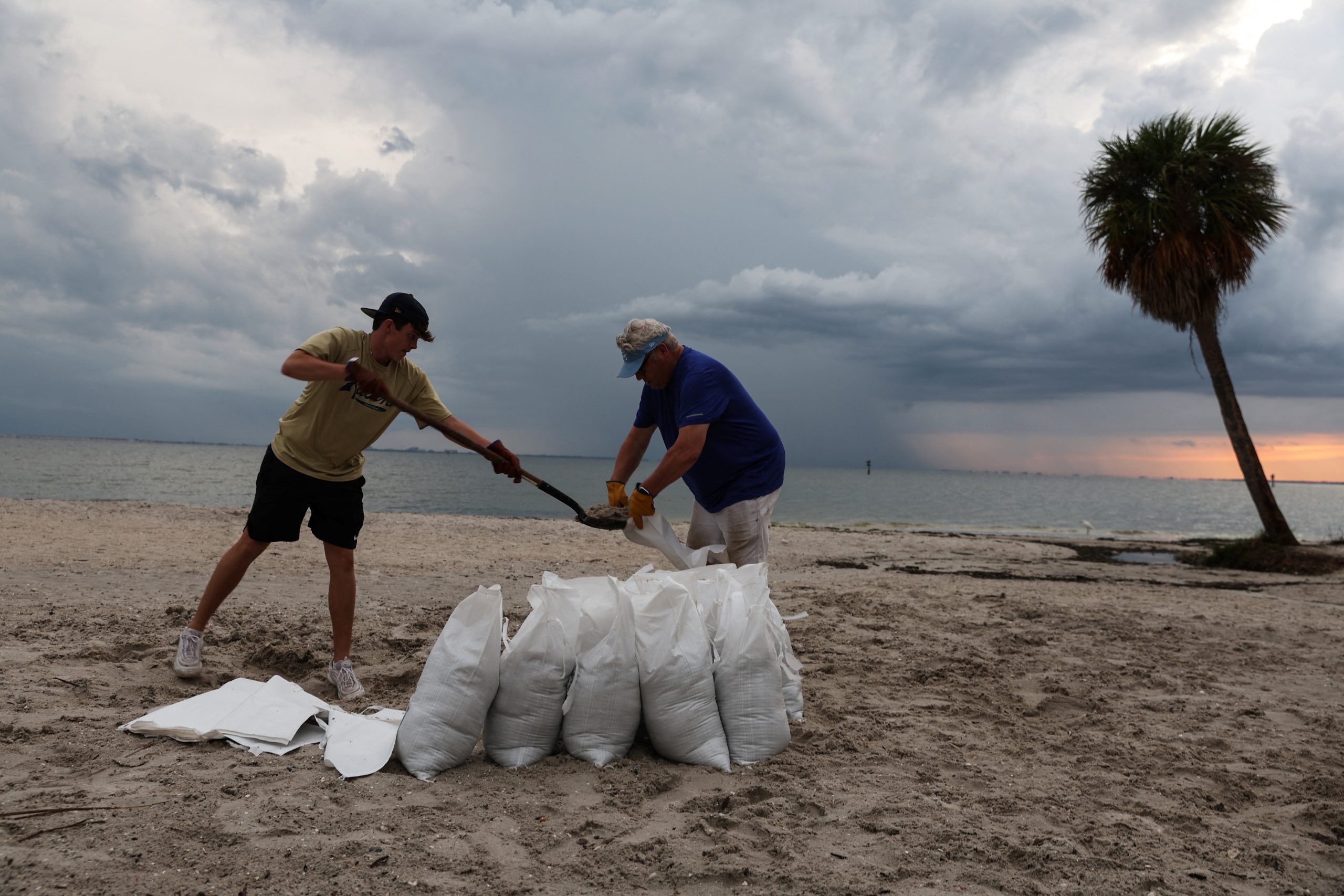
[elfsight_social_share_buttons id=”1″]
Residents across Florida scrambled to place sandbags around their homes and stockpile emergency supplies on Monday, emptying store shelves as Hurricane Ian spun toward the state carrying high winds, torrential rains, and a powerful storm surge.
Ian‘s path toward Florida forced the U.S. space agency NASA to roll its giant Artemis 1 moon rocket off its Cape Canaveral launchpad after postponing the much-anticipated mission a third time.
Hurricane Ian slammed into western Cuba on Tuesday, forcing evacuations, cutting power to hundreds of thousands of people, and swamping fishing villages as it tracked northward toward Florida.
The Category 3 hurricane was about 5 miles south of the city of Pinar Del Rio, with maximum sustained winds of 125 mph, the U.S. National Hurricane Center (NHC) said.
Forecasters said that once Ian left Cuba, the storm could make landfall north of Tampa Bay early on Friday or turn northwest toward Florida’s Panhandle. If the predictions come true, it would be the first time the Tampa region was in the direct path of a hurricane in over a century.
“This is a really big storm,” Florida Governor Ron DeSantis told a news conference, saying the storm could potentially envelope both coasts of the state.
The Biden administration declared a public health emergency for the state on Monday and said it was working with local officials to provide support.
The National Hurricane Center urged people to complete preparations and follow evacuation orders, as it anticipated the storm would hit Florida on Wednesday.
Hurricane & Tropical Storm Warnings for #Ian are in effect for much of the west coast of Florida. Preparations to protect life and property should be rushed to completion. Today is your last day to prepare and follow evacuation orders from local officials. https://t.co/cy01fM7Od6 pic.twitter.com/qAwQAHpjDG
— National Hurricane Center (@NHC_Atlantic) September 27, 2022
Signs of the impending storm were seen throughout Florida, a state of 21 million people. In Titusville, a city of 43,000 on the Atlantic Coast, crews used chainsaws to trim palm trees.
In a grocery store in St. Petersburg, across the state on the Gulf Coast, only empty cardboard boxes remained where the store normally stocks distilled water. Toilet paper, snacks, and canned soup could still be found.
In the historic Tampa neighborhood of Ybor City, northeast of downtown, Diane Zambito, 64, said she normally doesn’t get rattled by hurricanes that hit the state.
“But this one’s different,” she said on Monday afternoon as her husband nailed plywood over their home’s windows. “This one scares me. It’s too big to not be scared if you have any sense.”
The couple planned to shovel sand into bags and stack them up in front of the doors to keep water from flowing inside.
National Guard mobilized
The Zambitos were among many Florida residents preparing for flooding that could submerge streets and homes. Hurricane-force could damage or destroy homes and businesses and trigger power outages in the coming days, forecasters warn.
The governor has mobilized 5,000 National Guard members. An additional 2,000 are coming from Tennessee, Georgia and North Carolina and nearby states have troops on standby.
Key West Mayor Teri Johnston said her island city could be one of the first places in the United States hit by Hurricane Ian.
Johnston said homeowners and vacation rentals had nailed up storm shutters or boards across windows as residents stocked up enough food and water to last a week.
Hurricane Ian made landfall in Cuba’s Pinar del Rio province early on Tuesday, prompting officials to cut power to the entire province and evacuate 40,000 people from low-lying coastal areas, according to local media reports.
As of 6:30 a.m., regional broadcaster TelePinar reported an eerie calm in the city of around 145,000 people as the eye hovered over the area, but warned of fierce winds to follow.
Cuban state-run media reported the strongest winds to date from Ian at 130 mph at San Juan y Martinez, a small town on Cuba’s southwest coast.
The Miami-based National Hurricane Center warned of a life-threatening storm surge, flash floods, and possible mudslides across western Cuba on Tuesday.
Ian follows Hurricane Fiona, a powerful Category 4 storm that carved a path of destruction last week through Puerto Rico, leaving most of the U.S. territory without power and potable water. Fiona then barreled through the Turks and Caicos Islands, skirted Bermuda and slammed into Canada’s Atlantic coast, where critical infrastructure might take months to repair.
Copyright 2022 Thomson/Reuters (Additions and edits for FISM News by Michael Cardinal)
